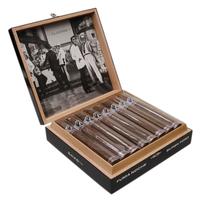What I have in mind so far...worth mentioning I don't have a buffer, have yet to learn to stain and such...it's pretty basic stuff. However, I'll take any recommendations for better products. I've always been able to shine them up, make them clean enough to smoke and look alright. Though the stems are never...shiny like I'd like, and reaming the bowl is a rough task with just a knife.
Anyways, the list for what I have planned....
Obsidian Oil
Paragon Wax for smooth pipes
Halcyon II wax for the rusticated
Castleford T-Handle (if I can get one in stock) - Have read good things about the Pipnet, but can't really afford it.
...have heard of sandpaper being used (seems easier for stems, and I have one pipe that's gauged in the bowl everywhere I guess from a knife) ....however...can someone give me a list of what grit sand paper I need for various things?
Of course more pipe cleaners and magic erasers.
So, for now...as I am not ready to move on to staining/serious work...just basic resto...am I missing anything here? Most of my pipes are estate...getting tired of doing things the hard way and want the cosmetic aspect to be improved.
Anyways, the list for what I have planned....
Obsidian Oil
Paragon Wax for smooth pipes
Halcyon II wax for the rusticated
Castleford T-Handle (if I can get one in stock) - Have read good things about the Pipnet, but can't really afford it.
...have heard of sandpaper being used (seems easier for stems, and I have one pipe that's gauged in the bowl everywhere I guess from a knife) ....however...can someone give me a list of what grit sand paper I need for various things?
Of course more pipe cleaners and magic erasers.
So, for now...as I am not ready to move on to staining/serious work...just basic resto...am I missing anything here? Most of my pipes are estate...getting tired of doing things the hard way and want the cosmetic aspect to be improved.







